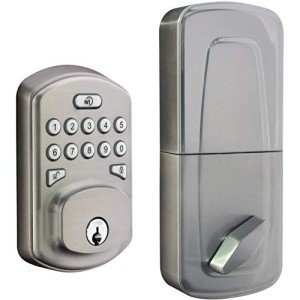7 Secrets About Contemporary Lighting UK That No One Will Tell You
Contemporary Lighting in the UK: Transforming Spaces with Illumination
Lighting plays an essential role in specifying the atmosphere and performance of any area. In the UK, contemporary lighting has actually become a considerable design component, using innovative options that blend looks with functionality. This article explores the various designs, products, and innovations shaping contemporary lighting, along with tips for picking the most ideal fixtures for numerous settings.
The Evolution of Contemporary Lighting
Contemporary lighting in the UK reflects the changing tastes and technological advancements in style. It encapsulates a large array of styles, including:
Minimalist: Characterized by simpleness and tidy lines, minimalist lighting fixtures focus on type and function without unneeded embellishments.
Industrial: Inspired by urban settings, industrial lighting combines raw products like metals and woods with vibrant designs, producing edgy, functional pieces.
Scandinavian: Known for its warmth and simpleness, Scandinavian lighting typically includes soft colors and natural products, focusing on producing a relaxing atmosphere.
Smart Lighting: This modern trend integrates innovation with design, enabling users to manage their lighting with mobile apps, voice commands, or automation systems.
To show the advancement and range in the field of contemporary lighting, think about the table below, which highlights crucial qualities of various styles.
Style
Key Characteristics
Popular Materials
Ideal Spaces
Minimalist
Easy, functional designs
Metal, glass, wood
Modern homes, workplaces
Industrial
Raw, incomplete appearance
Steel, concrete, wood
Lofts, galleries
Scandinavian
Relaxing, warm aesthetics
Natural fibers, light wood
Living spaces, coffee shops
Smart
Integrated technology, automation
Varies commonly
Residences, workplaces, retail areas
Picking Contemporary Lighting Fixtures
Picking the ideal lighting fixtures for a space requires careful factor to consider of a number of aspects. Here are crucial elements to bear in mind:
1. Function of the Space
Before picking fixtures, think about the desired use of the area. Different functions need different kinds of lighting:
- Task Lighting: Focused lighting for activities such as reading, cooking, or studying. Examples include table lamps and under-cabinet lights.
- Ambient Lighting: General lighting that supplies general illumination. Ceiling lights and pendant fixtures fall under this category.
- Accent Lighting: Designed to highlight specific features or areas, such as art work or architectural information. Buy Designer Lighting UK and mounted lights are typical choices.
2. Design and Theme
The lighting should complement the existing design. Choose for fixtures that match or improve the general style of the space, whether it's contemporary, rustic, or eclectic.
3. Size and Scale
Consider the proportion of the lighting fixtures relative to the space. A big chandelier might look spectacular above a spacious dining table, while smaller sized pendant lights work well in compact settings.
4. Energy Efficiency
With increasing energy costs and environmental issues, selecting energy-efficient lighting choices is vital. LED lights are an excellent option, using durability and lower energy usage.
5. Flexibility
In modern design, flexibility is crucial. Fixtures that can be changed or repositioned enhance functionality, permitting users to create various environments as required.
Popular Contemporary Lighting Brands in the UK
The contemporary lighting market in the UK boasts various brands understood for their ingenious styles and quality workmanship. Some noteworthy mentions include:
- FLOS: An Italian brand name commemorated for its artistic and iconic lights that typically function as art pieces.
- Tom Dixon: A British designer recognized for his modern, industrial designs that wonderfully incorporate metal and light.
- Anglepoise: Known for its versatile, functional lamps, perfect for a variety of settings from office to imaginative studios.
- John Lewis: Offers a range of contemporary lighting services that accommodate a wider audience, including affordable yet elegant choices.
FAQs about Contemporary Lighting in the UK
1. What is contemporary lighting?
Contemporary lighting refers to lighting designs and fixtures that show current style patterns, typically defined by tidy lines, ingenious shapes, and using modern materials and technologies.
2. How do I select the ideal lighting for my home?
Consider the function of the room, existing décor, size of fixtures, energy performance, and flexibility. Assess how each piece will contribute to the general ambiance and performance of your area.
3. What are some energy-efficient lighting choices readily available in the UK?
LED lights are the most prominent energy-efficient alternative, understood for their long lifespan and low energy consumption. Compact fluorescent lights (CFLs) and halogen bulbs are other options.
4. Where can I look for contemporary lighting in the UK?
Contemporary lighting can be found in different retail outlets, both online and in physical shops. Notable retailers include John Lewis, Habitat, and specialized lighting shops.
5. Can contemporary lighting work in traditional spaces?
Absolutely! Contemporary lighting can improve traditional spaces when picked attentively. Choosing fixtures with a balance between modern and classic components can develop an unified design.
Contemporary lighting in the UK represents more than just lighting; it embodies design development and imagination, changing areas and enhancing performance. As trends continue to evolve, property owners and designers alike can explore an extensive series of designs and technologies, making sure that every room bursts with life, heat, and character. By thinking about the necessary factors outlined in this article, one can curate a collection of lighting fixtures that resonates with individual style and meets useful requirements, eventually forming comfortable and visually attractive environments.
